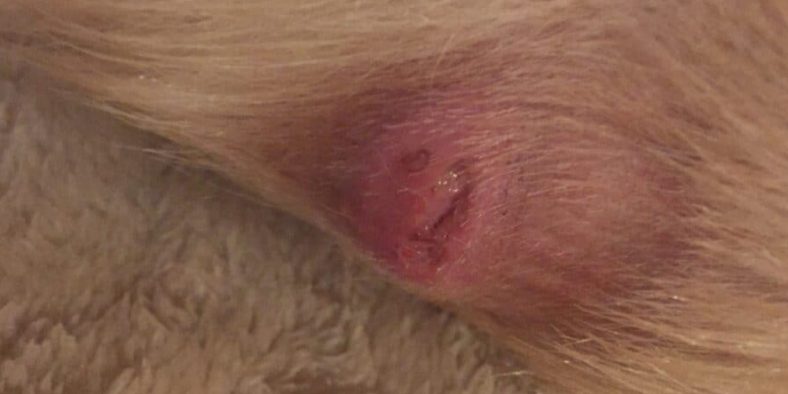If you’re a dog owner, there’s a good chance you’ll have to deal with a cyst at some point. While they can be unpleasant and unsightly, they’re not usually dangerous. We’ll teach you how to drain a cyst on a dog at home in this post.
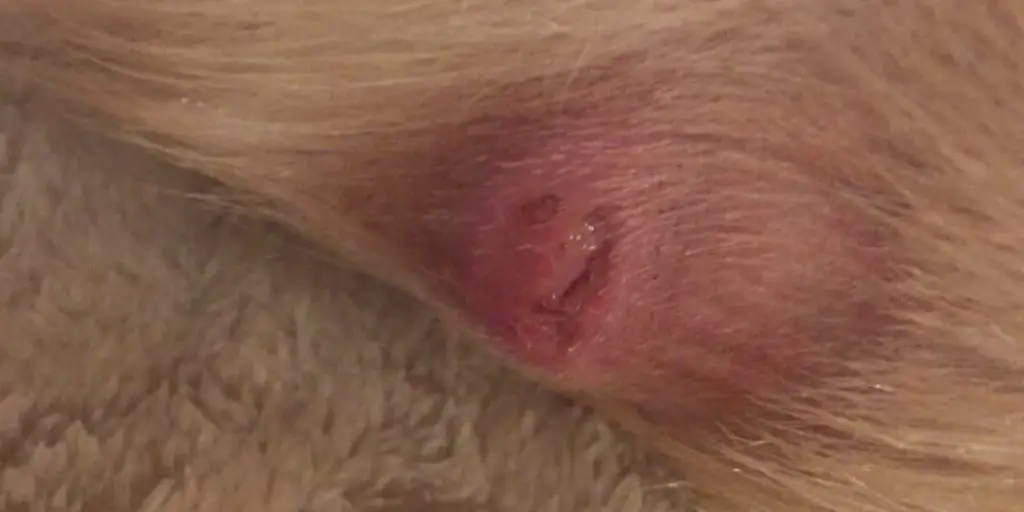
It’s important to note that if the cyst is large or overgrowing, it’s best to take your dog to the vet for treatment. However, if the cyst is small and slow-growing, draining it at home is a viable option. Please keep reading for instructions on how to do it!
A cyst is an abnormal pocket in the skin that contains fluid or semisolid material. Dog cysts are usually harmless, but if your dog has multiple unsightly growths with no signs of slowing down, you may want to consider having it checked out by the vet.
Contents
Different Types of Cysts
True Cysts :
A cyst is a small sac that contains fluid, pus, or other material. They are usually no bigger than a pea, but can sometimes be as large as a grapefruit. Cysts do not go deep into the tissue, and you can puncture them with a needle to drain their contents. This usually takes no more than 5 minutes.
False Cysts :
A false cyst is an abnormal opening in the skin that can lead down into a hair follicle or sweat gland. Unfortunately, both of these openings are very deep within the dog’s body. To drain these cysts would require a surgical procedure and most likely will cost several hundred dollars at your vet’s office.
Follicular Cysts :
This is a type of cyst that is more common in older dogs. It happens when the hair follicles are inflamed, irritated, or infected by bacteria. This creates a closed sac that collects around the hair shaft at the opening of the hair follicle.
Epidermal Inclusion Cysts :
Cysts are small, round bumps that can appear on your dog’s skin. They are usually filled with a protein called keratin, which is also found in hair and nails. Cysts can occur anywhere on your dog’s body, but they are most often seen on the face, ears, tail, and legs.
These cysts do not need to be drained because they eventually disappear spontaneously by rupturing or reabsorbing. However, just like false cysts, these types often will require surgery unless you can afford to visit your vet’s office.
Things You’ll Need
- Q-tips or cotton balls
- Hydrogen peroxide
- Unflavored yogurt ( if a dog will eat it)
- Tin foil
- Paper towels
- Bandaids/ antibiotic cream to help with the healing process after draining a cyst on a dog at home (optional)
A Detailed Guide on How to Drain a Cyst on a Dog at Home
Step 1 : Determine How Bad the Cyst is
If the cyst is small and you think it is not infected, you can let it drain on its own. Dog skin is very resilient, and if the cyst is not painful for your dog, has no redness or swelling around it, and does not seem like an emergency to them, then this may be your best option. If the cyst is more severe, draining it on your own may not be the best option. Cysts can become infected, and if they are near vital organs, they may require surgery to remove.
It will be easier to find a cyst with a warm compress. Apply a warm compress (a standard heating pad set on “low” setting works fine) on your dog’s affected area for 5-7 minutes before trying to locate the cyst. The warmth of the heating pad will help blood flow to the area, which will make the cyst easier to find.
Step 2 : Prepare The Area
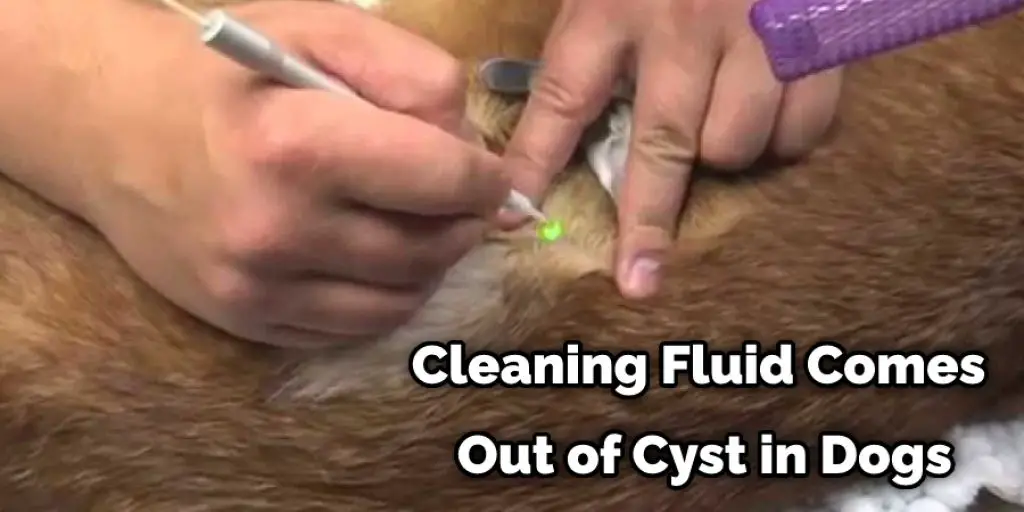
Put your dog in an area where you can easily clean up the fluid that comes out of the cyst . It’s also a good idea to have some paper towels or rags handy, just in case. If you want, put down the tin foil to help clean up later. Tinfoil is a good option because it will help absorb the drainage from the cyst.
Step 3 : Clean Your Dog’s Cyst
Take some hydrogen peroxide and sterilize the area where the cyst is located. You don’t want infections to set in while trying to drain this thing so take time with this step.
The more gentle you are with this process, the better- trust me on one. After cleaning both areas, take a Q-tip, cotton ball, or the sterile end of a sewing needle and gently twist it into the opening of the cyst.
How far you push this all depends on how big your dog’s cysts are. As soon as you feel fluid building up inside, stop pushing because that means that you’ve reached the center of the lump. How much pressure should I put? You will want to place enough pressure so that fluid begins to leak out of the cyst but not too much where it feels like blood is gushing everywhere.
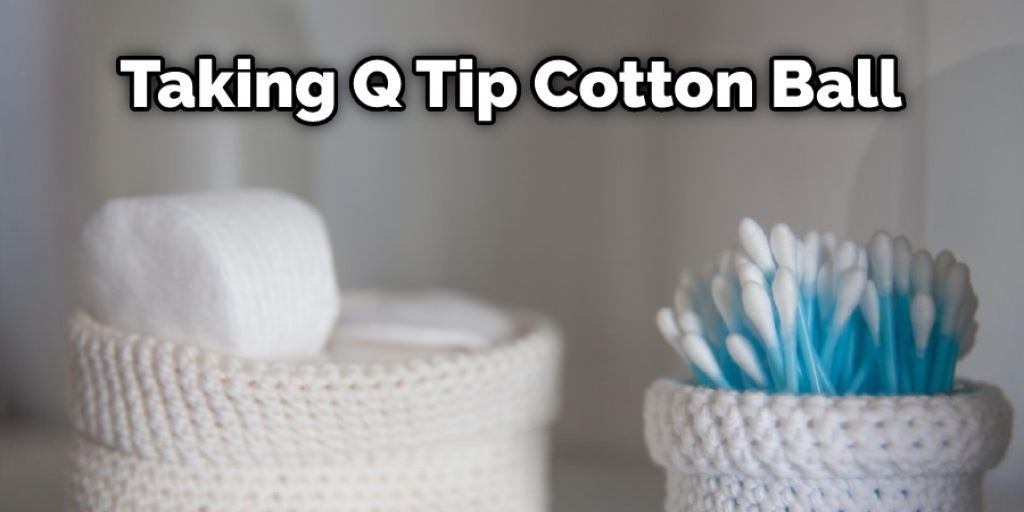
Step 4 : Drain The Fluid
Now comes time for draining it. There are two ways to do this, which each have its pros and cons depending on the size of your dog’s cyst and how comfortable you are with the situation. How to Drain It :
Method 1 : The Squeezing Method (for Smaller Cysts)
- Twist the Q-tip or sterile needle until fluid begins to ooze out of the opening, then stop twisting so that you don’t push too much liquid out.
- Squeeze gently but firmly directly over the opening so that all of the liquid comes out without any air mixing in with it.
- Apply pressure for a minute or two using a clean cotton ball or piece of paper towel to soak up as much liquid as possible after draining the cyst.
Method 2 : The Tapping Method (for More Giant Cysts)
- Apply pressure around the cyst opening using your fingers for 10 seconds.
- Stop applying pressure and gently tap the area with Q-tip or sterile needle to try and break up any blockages within it. Tapping directly onto your dog’s skin causes no harm, so don’t worry about harming them in the process of draining the cyst on a dog at home. It might sting a bit if there is pus inside, but generally, this method will not cause any pain unless you are tapping extremely hard on them (which you should never actually do).
- Repeat Step 2 until all blockages are out of the cyst. How long it takes to drain a cyst depends on the size of the lump and how deep it is. Generally, you can expect to see the liquid coming out after around 15-30 seconds of applying pressure; however, if not, keep tapping for about 5 minutes before concluding that there is nothing in there and you can stop trying.
This is a crucial step in how to drain a cyst on a dog at home.
Step 5 : Cleaning Up Afterwards
After everything is said and done, please clean up the area using a warm compress with hydrogen peroxide to disinfect it. How much hydrogen peroxide you use will depend on how big the cyst is.
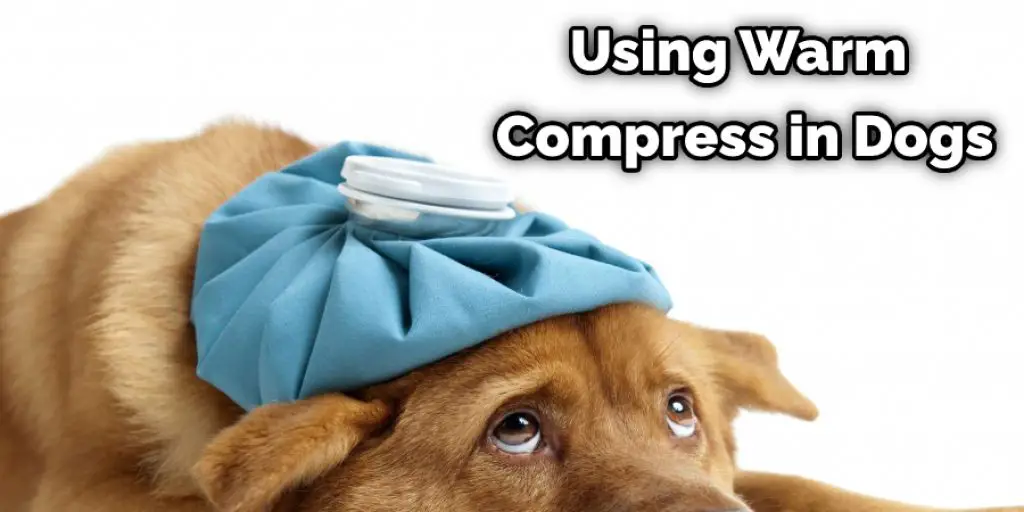
If it’s a small cyst, then one or two drops of hydrogen peroxide should do just fine, but if you’re dealing with something more significant, maybe 4-5 drops will be necessary.
Step 6 : Repeat Steps 3 and 4 as Necessary
If your dog’s skin does not have any infection attached to the opening of the cyst, it probably won’t require more than two rounds of draining before it is completely gone. However, there are some cases where that might not be enough, and you might need to drain another round after the first one is over.
How often you repeat this process depends on how deep and extensive the cyst in your dog’s skin is. If it were a big, deep lump, you would need to drain it more than once, but if not, only draining it twice should get rid of it completely. These steps will help in how to drain a cyst on a dog at home.
You can check it to Stop a Dog From Digging for Moles
Precautions
- Be very careful when draining a cyst on a dog at home that your pet is comfortable in your presence and won’t bite or scratch you in any way because if he does, then you can become infected from his wound. This means that you must take caution when handling him during this period.
- Depending on where the doggy cyst is located, it may be necessary for someone else to hold your pet while you carry out the procedure, so make sure they are around before starting this process.
- Don’t be alarmed if the cyst on a dog at home is uncomfortable for your pet because it can make them restless, irritable, and whine a bit. Also, remember not to squeeze too hard when draining the cyst, or you could cause even more problems for your canine friend.
- Make sure to wash your hands thoroughly with soap and water before and after this process to prevent any infection from occurring in your skin. Keeping a clean environment during the procedure will help lower the risk of getting an infection since germs can quickly spread from one place to another if precautions aren’t taken.

Conclusion
As you can see, cysts are easy to treat at home. Follow these tips, and your dog will be feeling better in no time! If you have any questions about using the methods we discussed how to drain a cyst on a dog at home today, please do not hesitate to ask your vet.
Cysts are not dangerous unless located where they may cause pain or discomfort in our canine companions. If this happens, be sure to take your beloved pets to the veterinarian immediately for treatment or relief.

